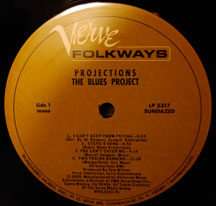
 Last Saturday I attended the WFMU Record Fair in New York City. The annual show is something of a “don’t miss” for record collectors, particularly those of the vinyl persuasion. People come from all over the country, and fly in from other parts of the world, to attend the three-day show. This is cratedigging at its best, and you wouldn’t believe that prices that some records fetch.
Last Saturday I attended the WFMU Record Fair in New York City. The annual show is something of a “don’t miss” for record collectors, particularly those of the vinyl persuasion. People come from all over the country, and fly in from other parts of the world, to attend the three-day show. This is cratedigging at its best, and you wouldn’t believe that prices that some records fetch.
My main goal this year was to start building up my collection of 45s again. Once upon a time I had a glorious collection which has seemed to disappear into thin air over the years. I’ve still got a bunch of good singles from the late ’70s – early ’80s, the Clash, Sex Pistols, etc., but I had my eye on ’60s music this year. So I journeyed into New York City, want list in hand.
By the end of the day, I’d only filled one of my wants but I had still managed to spend a lot of money on other things that caught my eye. I was about to leave when I decided to check my dealers list one more time I notice that the fine reissue company Sundazed had a booth at the show. I decided to stop by on my way out. Sure enough, there was more money to be spent because I immediately noticed that Sundazed had a reissue of one of my favorite ’60s albums, and of course I had to have it.
The Blues Project was a band that formed in Greenwich Village in 1965. The classic lineup made just two albums, and the first of those was live. By 1967 they were finished. The band was started by guitarist Danny Kalb, and included Roy Blumenfeld on drums, bass player Andy Kulberg, Steve Katz on guitar, and vocalist Tommy Flanders. In 1965 the Blues Project auditioned for Columbia Records but they weren’t signed. The news wasn’t all bad however, because it was through that audition that they encountered one Al Kooper. Kooper had started as a session guitarist, but switched instruments after a well-chronicled twist of fate found him playing organ on Bob Dylan’s “Like a Rolling Stone.” Soon Kooper was a member of the Blues Project.
The band started doing shows around the Village, and they were signed by Verve Records. In 1966 they released Live at the Cafe Au Go Go, but by then, Flanders was gone. The album was a moderate success, and after touring the US the band returned home to begin recording their second album, Projections, which was released in November, 1966. The album is an amazing mix of songs and styles including psychedelia, blues, jazz, and folk-rock. At its center is the 11 minutes-plus Danny Kalb showcase “Two Trains Running.” The Blues Project had become known as one of the earliest jam bands, and the song showed off their skills in that area to maximum effect.
Steve Katz, who with Kooper later founded Blood, Sweat & Tears, leaned a little more to the pop side of things, and his adventurous “Steve’s Song” is an album highlight. Katz also has a nice take on Bob Lind’s folk-rock classic “Cheryl’s Going Home.” It was back to improvisation for the Kooper-written instrumental “Flute Thing,” which featured bassist Kulberg on the title instrument, and some forward-looking guitar work from Kalb. Kooper’s vocal brilliance shines brightly on songs like the opening “I Can’t Keep From Crying,” and “Wake Me, Shake Me.”
Al Kooper left the Blues Project in 1967, soon followed by Katz and Kalb. There were reunions and more albums, but the band never again reached the musical peak that they did with the classic lineup’s one studio album, the Tom Wilson-produced Projections.
[kml_flashembed movie="http://www.youtube.com/v/Esc4y5MRpUk" width="600" height="344" allowfullscreen="true" fvars="fs=1" /]
[kml_flashembed movie="http://www.youtube.com/v/QkV7yLjGoDQ" width="600" height="344" allowfullscreen="true" fvars="fs=1" /]
[kml_flashembed movie="http://www.youtube.com/v/2hEn3XNkCTc" width="600" height="344" allowfullscreen="true" fvars="fs=1" /]
[kml_flashembed movie="http://www.youtube.com/v/2rlmK1IFAc8" width="600" height="344" allowfullscreen="true" fvars="fs=1" /]




Comments